
Death at the Opera is a 1934 mystery detective novel by the British writer Gladys Mitchell. It was the fifth novel in her series featuring the psychoanalyst and amateur detective Mrs Bradley. It was published in the United States under the alternative title of Death in the Wet.
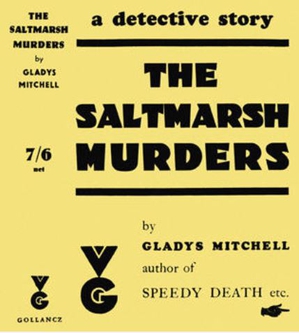
The Saltmarsh Murders is a 1932 mystery detective novel by the British writer Gladys Mitchell. It is the fourth in her long-running series featuring the psychoanalyst and amateur detective Mrs Bradley. It has been highly acclaimed as a part of the Golden Age of Detective Fiction.

The Bravo of London is a 1934 mystery thriller novel by the British writer Ernest Bramah. It featured his most celebrated character the blind detective Max Carrados who had first appeared in 1914. It was the first and only full-length novel to feature Carrados, who usually appeared in short stories.

Come Away, Death is a 1937 mystery detective novel by the British writer Gladys Mitchell. It is the eighth in her long-running series featuring the psychoanalyst and amateur detective Mrs Bradley. Although the plot revolves around Greek Mythology, the title is taken from a line from Shakespeare's Twelfth Night. It was followed by a loose sequel Lament for Leto in 1971.
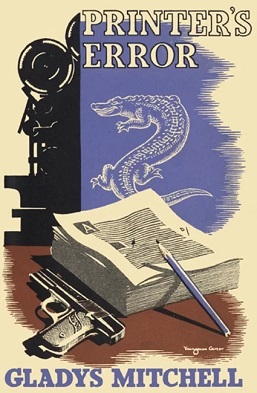
Printer's Error is a 1939 mystery detective novel by the British writer Gladys Mitchell. It is the tenth in her long-running series featuring the psychoanalyst and amateur detective Mrs Bradley.

The Mystery of a Butcher's Shop is a 1929 mystery detective novel by the British writer Gladys Mitchell. It is the second in her long-running series featuring the psychoanalyst and amateur detective Mrs Bradley. It further established the reputation of the quick-witted Bradley who is some way ahead of the investigating police officers. Mitchell also employed a number of original touches that would continue during the series.

The Longer Bodies is a 1930 mystery detective novel by the British writer Gladys Mitchell. It is the third in her long-running series featuring the psychoanalyst and amateur detective Mrs Bradley.

Dead Men's Morris is a 1936 mystery detective novel by the British writer Gladys Mitchell. It is the seventh in her long-running series featuring the psychoanalyst and amateur detective Mrs Bradley. It was the first to be published by Michael Joseph who released all the subsequent fifty nine novels in the series. It was later republished with the alternative title Death Comes at Christmas.

Laurels are Poison is a 1942 mystery detective novel by the British writer Gladys Mitchell. It is the fourteenth in her long-running series featuring the psychoanalyst and amateur detective Mrs Bradley. It was Mitchell's own favourite among her novels and has been considered her best by other critics. It introduced the character of Laura Menzies who became recurring assistant of Mrs Bradley in subsequent novels.

Hangman's Curfew is a 1941 mystery detective novel by the British writer Gladys Mitchell. It is the twelfth in her long-running series featuring the psychoanalyst and amateur detective Mrs Bradley.

When Last I Died is a 1941 mystery detective novel by the British writer Gladys Mitchell. It is the thirteenth in her long-running series featuring the psychoanalyst and amateur detective Mrs Bradley. In a review in The Observer, Maurice Richardson described it as "perhaps Miss Mitchell’s best, most ingenious crime story yet."

Mysterious Mr. Sabin is a 1898 spy thriller novel by the British writer E. Phillips Oppenheim. It was the first spy novel by Oppenheim, a genre which he came to dominate during the First World War and interwar era. Revolving around a plot of a Frenchman selling British military secrets it became a bestseller, establishing him as a popular writer. It has been described as the novel "that launched Oppenheim's career of xenophobic espionage fantasy". It contains elements of invasion fiction, a common genre theme at the time.
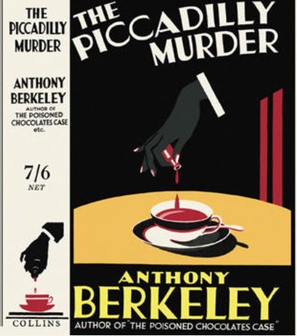
The Piccadilly Murder is a 1929 mystery detective novel by the British writer Anthony Berkeley. Berkley was a prominent writer during the Golden Age of Detective Fiction, known for his private detective Roger Sheringham series and his development of the inverted detective story. Although not part of the Sheringham series it featured the character of Chief Inspector Moresby of Scotland Yard who also appeared several times with Sheringham. Moresby reappeared with the chief protagonist Chitterwick in a sequel Trial and Error in 1937.

Trial and Error is a 1937 mystery detective novel by the British writer Anthony Berkeley. It was a loose sequel to the 1929 novel The Piccadilly Murder, featuring two of the characters from the earlier work the unprepossessing but shrewd Ambrose Chitterwick and Chief Inspector Moresby of Scotland Yard. Berkeley was a prominent author of the Golden Age of Detective Fiction, known for his inverted detective stories.
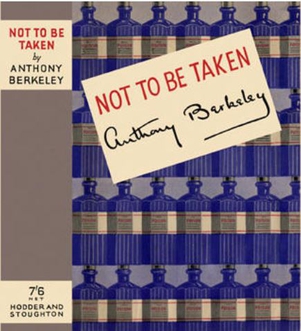
Not to Be Taken is a 1938 mystery detective novel by the British writer Anthony Berkeley. It was one of several stand-alone novels he wrote alongside his series featuring the private detective Roger Sheringham. It was written when the Golden Age of Detective Fiction was at its height. It was published in the United States with the alternative title A Puzzle in Poison.
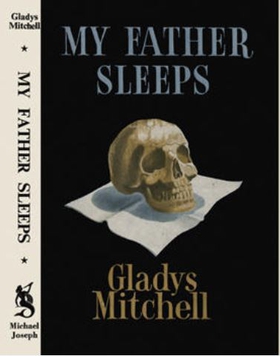
My Father Sleeps is a 1944 mystery detective novel by the British writer Gladys Mitchell. It is the seventeenth in her long-running series featuring the psychoanalyst and amateur detective Mrs Bradley. It is set in the Western Highlands of Scotland.

Sunset Over Soho is a 1943 detective novel by the British writer Gladys Mitchell. It is the sixteenth in her long-running series featuring the psychoanalyst and amateur detective Mrs Bradley. Bradley was one of a number of investigators active during the Golden Age of Detective Fiction.

The Worsted Viper is a 1943 detective novel by the British writer Gladys Mitchell. It is the fifteenth in her long-running series featuring the psychoanalyst and amateur detective Mrs Bradley. Bradley was one of a number of investigators active during the Golden Age of Detective Fiction. Much of the novel takes place on the Norfolk Broads.

To Love and Be Wise is a 1950 mystery detective novel by the British writer Josephine Tey. It was the fourth of six novels featuring Detective Inspector Grant of Scotland Yard during the Golden Age of Detective Fiction.

Death in the Quarry is a 1934 detective novel by the British authors G. D. H. Cole and Margaret Cole. It was the twelfth in their series of novels featuring Superintendent Wilson, one of the many investigators of the Golden Age of Detective Fiction. It was published by the Collins Crime Club.




















